Prescription drug abuse is responsible for over half of all drug overdose deaths in the U.S., and more people die from drug overdoses than gunshot wounds or motor vehicle accidents. The extent of the issue can’t be overstated, and this is why legislators, researchers and treatment providers are going to such lengths to tackle the growing problem.
In May 2014, the FDA approved a medication that can be used by anybody—even without medical training—to counteract opioid overdose, and other recently approved medications also offer promise for reducing the number of lives lost to prescription drug abuse. However, as with similar approaches, the psychological elements of addiction still need to be addressed in order to truly tackle the problems gripping the nation.
The Prescription Drug Abuse Epidemic
Prescription drug abuse is largely driven by the erroneous idea that prescription drugs are somehow “safe” because they’re prescribed by doctors. The problem is that many prescription drugs are addictive and only safe when used as suggested by physicians. As addiction develops, users are increasingly less likely to heed the suggested dosage advice, instead taking more and more of the substance to satisfy their growing cravings.
The majority of prescription drug abuse involves opioid medicines (substances with the same overall effects as heroin), but due to how widespread their abuse is, approximately five times as many people die from overdose on prescription opioids every year than from heroin overdose. Even combining heroin and cocaine overdose deaths doesn’t approach the number of deaths caused by prescription opioid overdose. Stopping these deaths is a huge priority for public health.
New Medications Offering Hope For Stopping Prescription Drug Overdoses
Evzio – The Opioid Overdose Reversal Shot
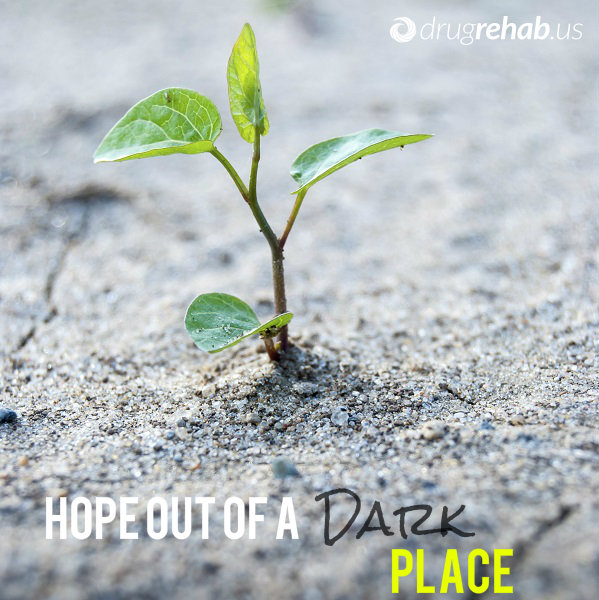 Evzio is an approved opioid overdose treatment, offering a single dose of naloxone hydrochloride and coming in a hand-held, auto-injection format. Naloxone is an opioid antagonist, meaning that it counteracts the effects of opioid drugs and can be used to quickly reverse the effects of overdose.
Evzio is an approved opioid overdose treatment, offering a single dose of naloxone hydrochloride and coming in a hand-held, auto-injection format. Naloxone is an opioid antagonist, meaning that it counteracts the effects of opioid drugs and can be used to quickly reverse the effects of overdose.
The drug has been used in emergency treatment of overdose for some time, but the benefit of the new formulation of the medication is that it doesn’t require a trained physician or medical professional to administer, meaning that a single shot could be kept in homes for use in emergencies.
The approach isn’t perfect—after all, the true problem is what caused the individual to take a dangerously high dose in the first place—but there is no doubt that quicker access to corrective medications could reduce the numbers of deaths.
Naltrexone Implants – Reducing Cravings And Stopping Addiction?
Naltrexone is an opioid receptor antagonist, which means that it effectively “blocks” the parts of the brain opioid drugs use to create their effects and thereby reduces cravings. The medicine has been used for some time for both heroin and alcohol addiction, but by giving the drug in implant form, it could potentially be more effective for curbing addiction.
BioCorRx uses the medicine alongside counseling in its Start Fresh Program, and the implant (inserted into the lower abdomen) gradually releases doses for a period of six months. According to the treatment provider, the approach is so effective that 85 percent of patients who go through all 15 sessions within six months quit abusing dugs, and some report that cravings disappear within just a few hours of having the implant inserted.
However, it’s worth noting that clinical trials haven’t been conducted on the program, so the very high success rate is likely an overestimation.
The Importance Of Psychological Treatment For Addiction
The new approaches to reducing the deaths from prescription opioid abuse are definitely promising, but Evzio in particular misses an important element of treatment for addiction. Having the overdose-counteracting shot in the homes of those at risk is obviously beneficial and will reduce the amount of needless deaths, but the underlying problem is effectively unaddressed.
Without psychological treatment to get to the bottom of what causes the individual to abuse prescription medications in the first place, the same (internal or external) pressures will undoubtedly crop up again after a near-overdose event, and without the psychological tools to deal with these pressures in a healthy way, more drug abuse is likely to result. It’s good to reduce the amount of fatalities from prescription drug abuse, but if we’re to make a substantial dent in the numbers, it is the addiction that needs to be addressed, not just the physical risk.
The BioCorRx program is promising because it does provide psychological treatment in addition to medication to help control cravings, although there are undoubtedly exaggerations with regards to the program’s success rate. However, by providing 15 counseling sessions, the program is able to offer goal-focused support to addicts, and help them take decisive steps toward lasting sobriety.
Understanding The Roots Of Addiction To Successfully Overcome It
New medications for tackling prescription opioid abuse have their uses, and anything with the power to reduce the deaths from opiate abuse should be wholeheartedly supported, but it’s essential to remember that addiction isn’t solely a physical issue.
In addition to raising awareness of prescription drug abuse itself, people need to recognize that the true roots of addiction are psychological, and it can’t be fixed with a simple pill, injection or implant. Overcoming addiction takes dedication. There are no short cuts.
There Is Hope However, Out Of That Dark Place To A Place With Light!
No one would have ever expected anything but success out of Liam. He was born to a charmed, wealthy family and had been its shining jewel. An all-star athlete and honors student, he’d attended Stanford University School of Medicine, with every intention of becoming the neurosurgeon he vowed he’d become at only 17. But a skiing accident changed everything for Liam; he’d been accelerating down a black diamond when a less skilled skier collided with him, injuring his lumbar. The back pain and medical treatments, including two surgeries, entailed the use of opioid painkillers in order to get Liam through the day.
Without his steady hand and laser focus, or an ability to stand comfortably for hours on end, his dream of operating fell away. And without an ability to be active in the same ways he had been—Liam had been something of a fitness nut before his injuries—he grew depressed. Soon enough, he realized he’d developed a problem with his pain medication; he had become dependent.
When You Become Addicted To The Treatment
 Liam was still seeking a residency (he would be a neurologist rather than a neurosurgeon), and knew that an addiction could drastically complicate his hopes. He’d heard plenty about compromised doctors and nurses who’d been arrested while abusing hospital medications, or injuring patients while high. He didn’t want to become a shameful statistic. So he sought treatment through a private referral. He would take Suboxone, or buprenorphine, an opioid pain reliever also used for long-term treatment of opioid addiction.
Liam was still seeking a residency (he would be a neurologist rather than a neurosurgeon), and knew that an addiction could drastically complicate his hopes. He’d heard plenty about compromised doctors and nurses who’d been arrested while abusing hospital medications, or injuring patients while high. He didn’t want to become a shameful statistic. So he sought treatment through a private referral. He would take Suboxone, or buprenorphine, an opioid pain reliever also used for long-term treatment of opioid addiction.
In the beginning, the buprenorphine worked well, but Liam discovered that the benzodiazepine he’d been prescribed for anxiety relating to his crash and the stress it had caused, when combined with the Suboxone, created something of a high. His habit-seeking behaviors began again in earnest. The Suboxone was no longer serving him as treatment for dependence. He was addicted to the treatment itself.
Opioid Addicts In Need Of Treatment
Buprenorphine, sold as Suboxone or Subutex, was approved by the FDA in 2002 for the treatment of opioid addiction in the U.S. Buprenorphine is prescribed by limited approved doctors as a sublingual (under-the-tongue) treatment for moderate pain and for long-term treatment of opioid addiction to suppress the symptoms of withdrawal and to reduce cravings. While it does not cause euphoria in opioid-dependent patients (and blocks the effects of other opioids for at least 24 hours), it can create euphoria and subsequent dependence in individuals who are not previously dependent on opioids. And while it is considered safer than methadone treatment, individual users still find ways to achieve a high (with combination benzodiazepines in some instances), making them more likely to remain drug dependent and less likely to recover.
From a New York Times piece in November, 2013: “Suboxone is the blockbuster drug most people have never heard of. Surpassing well-known medications like Viagra and Adderall, it generated $1.55 billion in United States sales last year, its success fueled by an exploding opioid abuse epidemic and the embrace of federal officials who helped finance its development and promoted it as a safer, less stigmatized alternative to methadone.”
Questioning Safety With Suboxone
In the realm of addiction, there are (many) dragons. Buprenorphine may, in fact, be doing more good than harm, and until statistical evidence reveals otherwise, a story like Liam’s may be purely anecdotal. There are others like him, but their numbers may stack up only so high compared to the numbers of individuals who are being helped by treatments like Suboxone. Opioids, it appears, create one of the hardest addictions to quit, and those who suffer may need all the help they can get.
Still, it’s wise to bear in mind that crossover addiction—the exchange of one addiction for another—is nearly universal in the addiction community. If an addict drops one addiction, he picks up another. With maintenance treatments like methadone and buprenorphine, the crossover addiction may become a case of choosing between the lesser of evils—and surely Suboxone treatment is a lesser evil than previous painkiller addictions.
If You Are Struggling With Opioid Abuse Or Addiction, It’s Time To Step Up And Make The Call…It Could Change Your Life!
Prescription painkillers can be useful medications to help you manage moderate and severe pain. In fact, for many people, these drugs make life tolerable again because they are so good at relieving pain. However, narcotic painkillers can also be dangerous. If you are prescribed an opioid narcotic painkiller, make sure you understand the risks and take steps to avoid becoming addicted.
Prescription Narcotics And The Addiction Epidemic
 Narcotic opioid painkillers include drugs that are found naturally in the opium poppy as well as substances that were invented in a lab based on these natural compounds. They work to relieve pain in the body by activating opioid receptors in the brain and other parts of the nervous system. This activation also gives the user a profound sense of euphoria, also known as a high. It is this effect that causes many people to abuse opioids and become addicted.
Narcotic opioid painkillers include drugs that are found naturally in the opium poppy as well as substances that were invented in a lab based on these natural compounds. They work to relieve pain in the body by activating opioid receptors in the brain and other parts of the nervous system. This activation also gives the user a profound sense of euphoria, also known as a high. It is this effect that causes many people to abuse opioids and become addicted.
The Centers for Disease Control and Prevention reports that by 2010 one in 20 Americans over the age of twelve had abused a narcotic painkiller. In 2008, these drugs caused nearly 15,000 overdose deaths, a number that had quadrupled in a decade. Risk factors for overdosing on narcotic painkillers include being a man, living in a rural area and being middle aged, but anyone can be vulnerable.
What To Do To Keep Yourself Safe When Taking Painkillers
Take Your Medications As Directed
The most important thing you can do to take your medications safely and avoid becoming addicted is to follow your doctor’s directions. Never take more than your recommended dose without asking your doctor first. Never take the medication more frequently than recommended and never take it for a longer period of time. Do not crush a medication. Some drugs include extended release formulations, which can be destroyed when crushed. Doing any of these things constitutes abuse of the drug and puts you at risk for dependency. If your medication is not adequately relieving your pain, speak to your doctor about changing your prescription or dosage.
Communicate With Your Doctor And Other Caregivers
Health care workers can only help patients to the extent that there is good communication. A good relationship between you and your doctor will give help you to get the best care possible. Tell your doctor if you experience any uncomfortable side effects from a prescription. Also report when a drug is not working for you or if its effectiveness has changed at all. It is also important that you tell your doctor about any other medications or supplements that you take. There may be dangerous interactions with your narcotic painkiller.
Stop Drinking
Narcotic painkillers interact dangerously with alcohol. Even one glass of wine or one cocktail while taking a prescription painkiller can be harmful. Both alcohol and your painkiller affect your central nervous system in such a way as to make you a little fuzzy. They both depress your breathing. When taken together, these effects are multiplied. Many overdose deaths occur when someone has mixed a painkiller with alcohol. As long as you need to be on this medication, avoid drinking at all.
Protecting yourself from the dangers of narcotic painkillers is important. If you follow these guidelines you can get the benefits of these drugs while minimizing your risk of dangerous side effects, addiction and overdosing. It is also important to protect those around you. Most people who abuse narcotic painkillers got them from a friend or family member. Never give your prescription to someone else and keep your medications locked up so that no one else can get access to them.
Read More About Drug Overdose Risks
Buprenorphine is a drug that can be used to treat opioid addiction. It comes in two formulations called Subutex and Suboxone. Although these medications are designed and prescribed to help people overcome addiction, some people abuse them to get high. If you love someone battling opioid addiction, pay close attention and make sure he is not abusing the medication that is supposed to be helping him heal.
What Is Buprenorphine?
Buprenorphine is a synthetic opioid drug that blocks withdrawal symptoms. When the addict takes it, he can stop using heroin or painkillers without experiencing the withdrawal that leads many addicts back to substance abuse. Subutex contains buprenorphine alone and is supposed to be used first and for a short period of time. Suboxone includes a second drug, naloxone, which is intended to prevent abuse. It blocks the high that buprenorphine can impart to the user and is designed to be used after Subutex.
Can Someone Abuse Buprenorphine?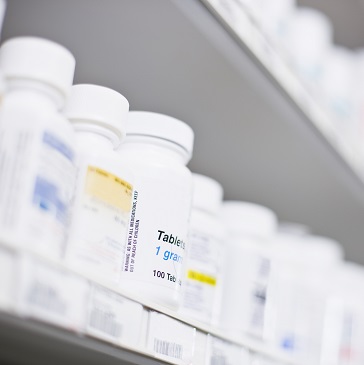
Buprenorphine was the first medication that the Food and Drug Administration allowed to be dispensed from doctors’ offices thanks to its successes in treating opioid addicts. Not all stories of buprenorphine use have been good, though. Some people have abused the medications, and although it is supposed to be impossible to overdose on, there have been deaths associated with Suboxone and Subutex abuse.
It is more difficult to get a high from buprenorphine, and also more difficult to overdose, than other opioids. It is possible, though, and some abusers are desperate enough to use this medication like an illegal drug. Dealers are making a killing selling black market buprenorphine, both to people wanting to abuse it and those wanting to use it as a treatment.
How Can I Tell Someone Is Abusing Buprenorphine?
It is important that you are vigilant with your loved one who has been prescribed buprenorphine. Not everyone realizes that there are risks associated with abusing it. Many are told that you can’t overdose on it, but this isn’t true. Make sure your loved one understands this risk and watch out for signs that he has started abusing his medication.
If you have lived with a drug addict you already know what many of the signs of abuse are. Maybe he has started:
- sleeping more
- missing days of work
- borrowing or stealing money
- having mood swings that seem inexplicable
Watch out for all the usual signs of drug abuse that you have seen before. If he starts acting like he used to when he was using, you should be concerned.
There are also specific symptoms associated with abusing buprenorphine medications. Side effects of the drugs that are possible include:
- flu-like symptoms
- sweating
- headaches
- mood swings
- nausea
- difficulty sleeping
Watch for indications that any of these are getting worse. If he is using more of the medication than directed, the side effects could be intensified. Other signs may include:
- hair loss
- emotional instability
- apathy
- a loss of interest in sex
- watery eyes
- muscle pains and cramping
- impaired memory
- depression or anxiety
Buprenorphine can be a powerful aid in helping opioid addicts get clean and stay clean, but there are risks that are often overlooked. As someone who loves an opioid addict, you should encourage him to use all the tools at hand to beat his addiction, including buprenorphine. But you should also be careful and look for signs that he has turned to his prescription medication for a high. If he has, confront him with love, understanding and patience, and help him to get back on the road to recovery.
If You Or Someone You Love Is Struggling With Addiction – Call Us Now – We Are Here For You 24/7
Stimulants are drugs that increase your metabolism, heart rate and blood pressure. They make you feel alert, keep you awake, can help you focus, and may cause you to lose your appetite and lose weight. Among drugs that are abused, the amphetamine class of stimulants is both popular and dangerous. In terms of methamphetamine vs. amphetamine, it can be difficult to distinguish between the two, yet there are important differences.
Amphetamine and methamphetamine are prescriptions that help many people, but which also have a high potential for abuse. Another member of this class of drugs, methcathinone, has no clinical use, but has been discovered by abusers and is growing in popularity. It is important to learn about these common, but dangerous stimulants, especially if you are the parent of teens.
Amphetamine vs. Methamphetamine
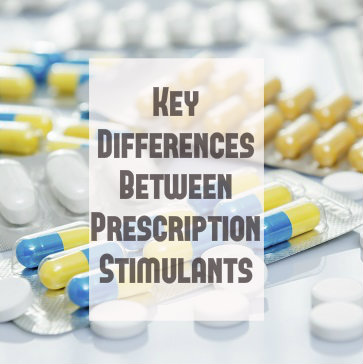 Amphetamine is a stimulant drug from which all other members of its group are derived. It is the base drug. As a stimulant, amphetamine acts on the central nervous system. It is most often prescribed for children with ADHD. It helps them to focus. Amphetamine is commonly abused by high school and college students as a study aid. It produces wakefulness and focus, which makes it a desirable tool for studying long hours. The risks, however, are great. Amphetamine causes side effects like nausea, headaches, shaking, insomnia, nervousness and more. It is also highly addictive.
Amphetamine is a stimulant drug from which all other members of its group are derived. It is the base drug. As a stimulant, amphetamine acts on the central nervous system. It is most often prescribed for children with ADHD. It helps them to focus. Amphetamine is commonly abused by high school and college students as a study aid. It produces wakefulness and focus, which makes it a desirable tool for studying long hours. The risks, however, are great. Amphetamine causes side effects like nausea, headaches, shaking, insomnia, nervousness and more. It is also highly addictive.
Methamphetamine is similar to amphetamine. Like amphetamine, it is a stimulant that increases wakefulness and alertness. It is less often prescribed for ADHD and in rare cases can be used to treat obese patients. Methamphetamine is prescribed less often than amphetamine because it is more harmful. It can cause lasting damage in the brain with long-term use and is extremely addictive. Because prescriptions for methamphetamine are scarcer, users often get it from amateur meth labs. Abusers of meth use it to get a high rather than to study.
Methcathinone vs. Methamphetamine
Another member of the amphetamine stimulant class of drugs, methcathinone, is similar to methamphetamine. Unlike meth, however, it has no clinical use. It is a Schedule I drug in the U.S. because it is dangerous and addictive. It is not prescribed to treat any medical conditions. Methcathinone is chemically very similar to methamphetamine and is also a stimulant.
Like both amphetamine and methamphetamine, methcathinone suppresses the appetite, increases wakefulness, heart rate and energy, and produces alertness in the user. The sense of euphoria that also comes with taking the drug is the main reason people abuse it. The feeling is described as being less intense than that imparted by methamphetamine. As with methamphetamine, methcathinone causes long-term damage and is highly addictive.
All members of the stimulant class of drugs have potential for abuse, but amphetamine, methamphetamine, and increasingly methcathinone are among the most common. Teens and young adults are often drawn to these drugs for either the high, the potential for a study aid, or both. Adults and parents should be aware of these drugs and the harm that they can cause.
If You Or Someone You Love Is Struggling With Stimulant Abuse, Call Us Now – Help Is Available 24/7
The problem of prescription drug abuse is one that touches almost everyone in some way. Millions of Americans have abused prescription drugs and are at risk of becoming addicted or even of having a fatal overdose. Teens are particularly vulnerable and don’t always understand the dangers associated with prescriptions. Teens today are abusing prescription drugs in greater numbers than any other age group. Learn how to keep your teen safe in the face of this epidemic.
Which Drugs Are Teens Abusing?
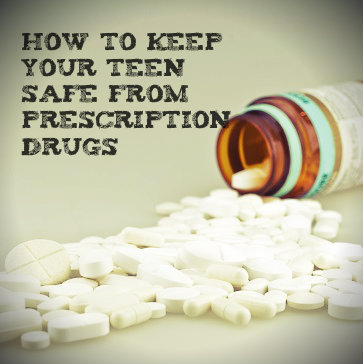 Teens are abusing prescription painkillers in record numbers. These are narcotic controlled substances and are highly addictive and easy to overdose on. In the last 20 years, the number of people between the ages of 12 and 17 that abuse these painkillers has increased ten-fold. No teen demographic is excluded from these statistics. Teens from all socioeconomic backgrounds, of all races, and of both genders are abusing painkillers.
Teens are abusing prescription painkillers in record numbers. These are narcotic controlled substances and are highly addictive and easy to overdose on. In the last 20 years, the number of people between the ages of 12 and 17 that abuse these painkillers has increased ten-fold. No teen demographic is excluded from these statistics. Teens from all socioeconomic backgrounds, of all races, and of both genders are abusing painkillers.
The other category of prescription drugs being abused by teens is stimulants. Stimulant medications are typically amphetamines prescribed for children with attention deficit hyperactivity disorder, or ADHD. Teens abuse them mostly as study aids. They have the effect of keeping the user awake and allowing for more focus and concentration. In a competitive academic world, many teens turn to these drugs to get better grades. The risks are high, of course, and include addiction, long-term health consequences and overdose.
How Can I Keep My Teen Safe From Prescription Drugs?
One of the scariest aspects of the trend in teen prescription drug abuse is that parents are largely unaware of the problem. As many as one in ten teens abuses stimulants, yet most parents have no idea what’s going on. How can you keep your teen safe when you don’t know there is a problem? The first thing you can do to protect your teen is to get to know his activities. By developing an open, communicative and trusting relationship with your teen you will be better tuned in to what is going on with him. You will be more likely to notice if something seems off, which could be attributed to drug abuse.
As you educate yourself about prescription drug abuse, also educate your teen. Knowledge is power and many teens abuse these drugs thinking that they are mostly harmless. If doctors prescribe them, sometimes even to kids, they must be safe, right? This attitude is dangerous. Learn about the risks of taking these medications without a doctor’s supervision and share what you learn with your teen.
It is also important that you minimize your teen’s access to drugs. There are many reasons teens abuse drugs, but one reason they may turn to these prescriptions more than most other substances is access. Most people abusing prescription drugs get them from a friend or family member. If anyone in your family has been prescribed a painkiller or stimulant, make sure it is kept in a secure location that your teen cannot access. Teens also get prescriptions from illegal online pharmacies that don’t check for prescriptions. Control your teen’s access to the Internet and check his history from time to time.
The problem of prescription drug abuse is a serious and ongoing one, for both adults and teens. To keep your teen safe from the epidemic of prescription abuse you need to be aware and knowledgeable. Talk to your teen and make sure he knows that he can come to you with problems. Discuss the risks of abusing drugs and restrict his access to them; take these important steps to reduce the chances that he will experiment with prescriptions.
If You Suspect Your Teen Is Abusing Prescription Drugs – Don’t Hesitate – Call Us Now!
19 Jun 2014
What’s The Deal With Seniors And Drug Abuse?
Thinking about drug abuse, you probably picture younger people popping pills, shooting up or smoking. What is difficult is to imagine is that there is a rising problem among older adults when it comes to drug abuse. The main culprits are prescription medications. Just because a doctor prescribes them does not mean these drugs are always safe. Many prescriptions are susceptible to abuse and it is not only younger people who have used them inappropriately. In fact, surveys show that abuse among older Americans is on the rise. If you care for an older family member be aware of the issue so you can intervene if necessary.
What Are The Dangers For Seniors Abusing Prescriptions?
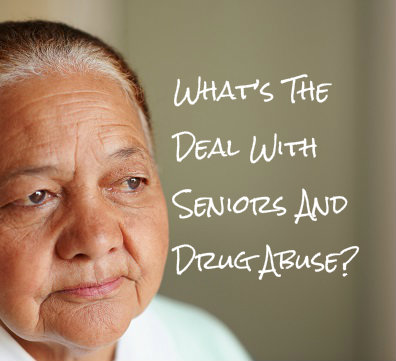 There are several prescription medications that people abuse because of the feelings they impart. For many, the abuse starts slowly and seems harmless. Just how dangerous are these medications when taken against a doctor’s direction? It depends on the medication, but with any drug the side effects will be amplified and intensified when more than the recommended dose is taken.
There are several prescription medications that people abuse because of the feelings they impart. For many, the abuse starts slowly and seems harmless. Just how dangerous are these medications when taken against a doctor’s direction? It depends on the medication, but with any drug the side effects will be amplified and intensified when more than the recommended dose is taken.
For seniors there are particular risks associated with abusing medications. Your older loved one is likely taking several medications. When she abuses one or more of them she increases the risk of a dangerous interaction between two or more medications. She may also have more health problems that could be exacerbated by taking too much of one medication. Of course, at any age there is the very real possibility that drug abuse could lead to addiction.
Which Prescriptions Are Addictive?
Any medication that has addictive potential can be abused. These drugs all give the user a pleasant feeling, which is why they can lead to dependence. Be aware of the medications your loved one is using and educate yourself as to their risks and addictive potential. There are three main classes of drugs that are most often abused: depressants, stimulants and opioids.
Depressants, also known as sedatives, have a relaxing effect on the body. For seniors, the most likely type of depressant to be prescribed is a sleep aid. Stimulants have the opposite effect. They cause wakefulness and alertness and are most commonly prescribed as ADHD medications. Your older friend is unlikely to be prescribed a stimulant. Of greatest concern may be the opioids. These are painkillers that also produce a high when taken in larger doses. Codeine, morphine, oxycodone, hydrocodone, fentanyl and hydromorphone are examples of prescribed opioids.
What Are The Signs Of Abuse?
If you have an older adult in your care, or are concerned about a parent or friend who takes prescription medications, watch out for signs of drug abuse. Look for signs of intoxication. For example, if she slurs her speech, stumbles or falls more often, or if her behavior in general seems off to you, she may be under the influence.
Also look for other signs that may be subtler, such as changes in behavior or routine. She may experience a change in sleeping habits or appetite as a result of abusing medications. You may also observe increasing irritability or confusion. She may act suspiciously as well. For instance, she might make multiple appointments with different doctors in order to get more prescriptions or start going to different pharmacies to avoid suspicion.
Some of these signs of drug abuse may also indicate a new or worsening health problem. In either instance, you should be concerned for the senior in your care. Start a conversation with her and encourage her to see her doctor to discuss options for dealing with the issue.
Read More About Seniors And The Surge In Substance Abuse – And Help Your Loved One Today!
At one time Oklahoma ranked number one in prescription drug abuse. After implementation of a statewide prescription drug monitoring program (PDMP) and the concerted efforts of lawmakers and law enforcement the state has moved down the list to number eight in the nation. But Oklahoma is not satisfied and continues to try and overcome the scourge of prescription drug abuse.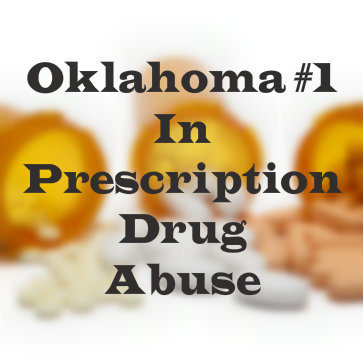
How Big Is The Prescription Drug Problem?
Last year in Oklahoma doctors and medical professionals wrote 10 million prescriptions for powerful opioid painkillers and other scheduled drugs. Those prescriptions were written to 142,369 patients, which averages out to 68 prescriptions per patient. Pharmacists filled those prescriptions with 597 million pills.
The detailed information is available thanks to the state’s PDMP, which electronically records the data. The hope is that doctors would look online before writing a prescription to see how often each patient has been given a script for heavy-duty medication. But reviewing the data it became evident that few doctors, just one-fourth, were using the PDMP prior to writing prescriptions for patients. Doctors are not yet legally required to check the PDMP first, but that could change.
Death Toll Rising
In 2012 there were 844 fatal overdoses in Oklahoma. That means that year more people died from drugs than were killed in car crashes, at 708. The majority of drug overdoses were accidental, and 75 percent involved prescription drugs.
The most dangerous prescription drugs in terms of overdose risk are opioids (e.g.: Vicodin, Lortab, OxyContin, Percocet), and the anti-anxiety medication Xanax. Too often people mix medications with alcohol, or take multiple meds at the same time. The stats show that two people per day are dying in Oklahoma because of prescription drug overdose. Deaths related to prescription drugs have risen 80 percent there in the past 10 years, and Oxycodone and Hydrocodone deaths in the state have quadrupled in that time.
The problem is most acute among 18- to 25-year-olds with a 10.9 percent abuse rate. Overall, 5.2 percent of Oklahomans over age 11 abuse the medications. Apart from the risk of fatal overdose, another concern about the epidemic of opioid abuse is where it tends to take people. Experts in the state say that around 85 percent of heroin users started out abusing prescription opioids.
Oklahoma is not unique. Across the country abuse of prescription drugs continues to claim a shockingly high number of lives. And where opioid use is beginning to drop, there is the selfsame increase in heroin use. Which makes it that much more important that we stop the problem before it moves to the street. We can monitor and prevent much prescription drug abuse through PDMPs. If we don’t, the problem will quickly transition to street drugs like heroin where monitoring and intervention is far less likely.


